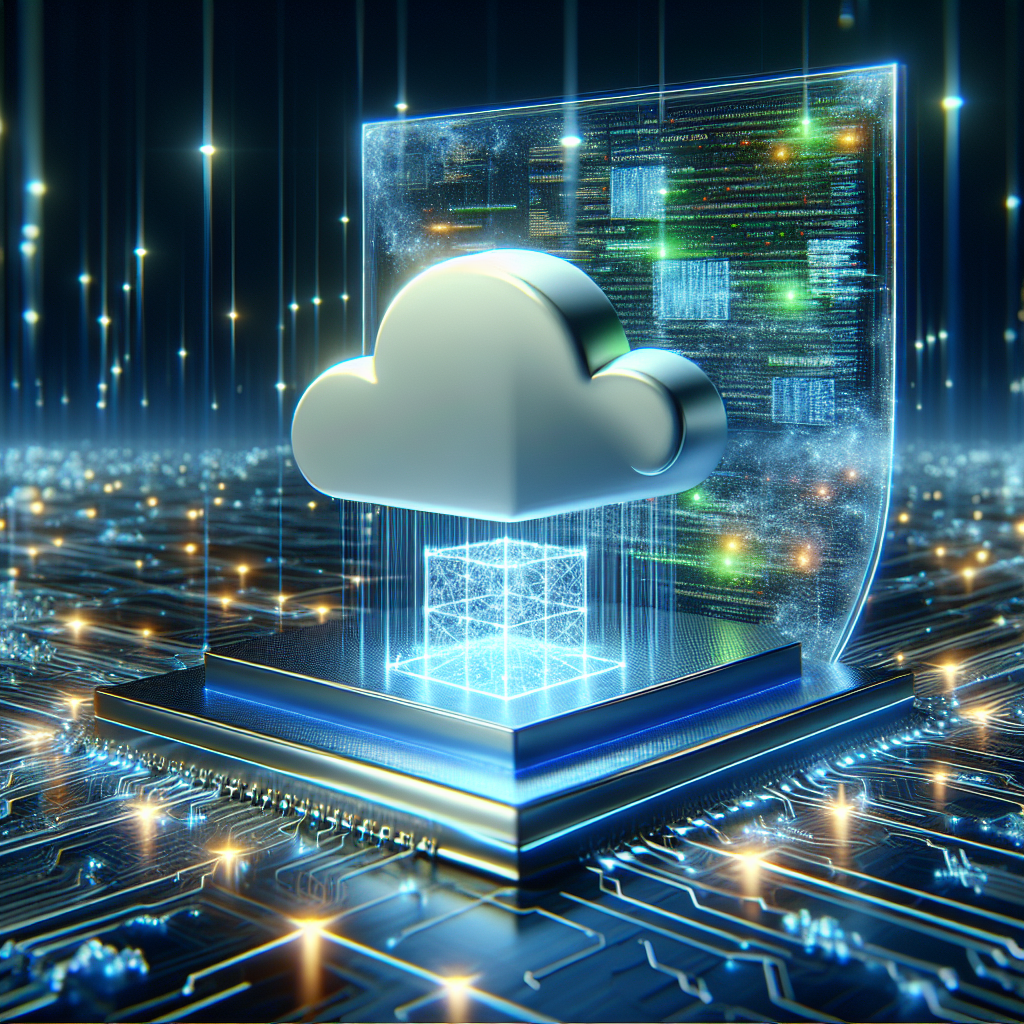Introduction
In today’s digital age, robust cybersecurity is non-negotiable. With more businesses migrating to the cloud, Amazon Web Services (AWS) has emerged as a leader in offering scalable and secure solutions. However, as threats evolve, AWS security enhancements are crucial. According to insights from the International Cybersecurity Conference, cyber incidents involving cloud services have surged by 25% over the past year alone. This alarming trend underscores the urgent need for advanced defense mechanisms that transcend traditional methods.
Artificial intelligence (AI) and machine learning (ML) represent the next frontier in cybersecurity. These technologies offer unparalleled capabilities to identify, predict, and mitigate threats in real-time, significantly enhancing AWS defenses. In this article, we explore how implementing AI-driven threat detection and predictive analytics can revolutionize your cloud security strategies.
The Rising Threat Landscape
With an increasing reliance on cloud infrastructure, organizations face sophisticated cyber threats daily. As businesses move critical operations to the cloud, securing these environments becomes imperative. Traditional security measures often fall short in detecting complex attacks, making it essential to adopt innovative solutions like AI-driven threat detection for AWS security enhancement.
AI offers a proactive approach by analyzing vast amounts of data and identifying potential threats before they materialize. This real-time threat detection capability allows businesses to respond swiftly, minimizing the impact of cyber-attacks on their operations. For instance, recent advancements in AI have enabled cloud providers like AWS to deploy adaptive systems that can predict and counteract zero-day vulnerabilities.
A notable example is a large financial institution that successfully thwarted an advanced persistent threat (APT) using AI-driven tools within its AWS environment. By analyzing traffic patterns and identifying anomalies, the system flagged suspicious activities before any significant damage could occur, showcasing the effectiveness of integrating AI into cybersecurity strategies.
Implementing Machine Learning Models
Integrating machine learning models into your cloud infrastructure can significantly strengthen AWS defenses. These models excel at processing large datasets quickly, spotting patterns and anomalies that might indicate a security breach. By utilizing artificial intelligence for predictive analytics, organizations can enhance their ability to preemptively address vulnerabilities within cloud infrastructures.
The implementation of AI-driven threat detection systems involves several key steps:
- Data Collection: Gather extensive data from various sources across your AWS environment.
- Model Training: Use historical data to train machine learning models, enabling them to recognize normal behavior and detect deviations.
- Continuous Monitoring: Deploy these models in real-time to continuously monitor your cloud infrastructure for any irregular activities.
A practical example of this can be seen in a multinational corporation that implemented AI-driven threat detection across its AWS deployments. By training their models on historical data, they were able to reduce false positives significantly and focus resources on genuine threats. As a result, the company observed a 30% reduction in security incidents within six months.
Utilizing Artificial Intelligence for Predictive Analytics
Artificial intelligence’s role in predictive analytics is transforming how businesses approach cybersecurity. By leveraging AI, organizations can foresee potential vulnerabilities before they are exploited. This preemptive capability not only enhances security but also contributes to cost efficiency by reducing the need for reactive measures.
Predictive analytics using AI involves:
- Data Analysis: Continuously analyze data from cloud environments to identify trends and patterns.
- Risk Assessment: Evaluate potential risks based on historical and real-time data.
- Actionable Insights: Generate insights that help in making informed decisions about security protocols.
For example, an e-commerce giant used predictive analytics within its AWS infrastructure to anticipate and mitigate DDoS attacks during peak shopping periods. By forecasting traffic surges and identifying suspicious activities beforehand, they ensured uninterrupted service for millions of customers worldwide.
Industry Trends and Future Predictions
The integration of AI in cybersecurity is not just a trend; it’s becoming an industry standard. As cyber threats grow more sophisticated, the demand for intelligent solutions that can adapt and evolve is increasing. Experts from the Artificial Intelligence Institute predict that by 2025, over 70% of enterprises will have fully integrated AI into their cybersecurity strategies.
One emerging trend is the use of federated learning, where machine learning models are trained across multiple decentralized devices or servers holding local data samples without exchanging them. This approach enhances privacy and security while allowing organizations to leverage collective intelligence for better threat detection.
Additionally, the rise of quantum computing poses new challenges and opportunities in cybersecurity. AI-driven systems will play a crucial role in developing quantum-resistant algorithms, ensuring that cloud infrastructures remain secure against future threats.
Case Studies
Case Study 1: Healthcare Provider Enhances Patient Data Security
A leading healthcare provider faced challenges in securing sensitive patient data stored on AWS. By integrating AI-driven threat detection and predictive analytics, they were able to identify potential breaches before they occurred. The system’s ability to learn from historical data allowed it to detect unusual access patterns, which were then flagged for immediate investigation. This proactive approach not only safeguarded patient information but also ensured compliance with stringent healthcare regulations.
Case Study 2: Retail Giant Optimizes Security During High-Traffic Events
A global retail company experienced frequent cyber-attacks during high-traffic events like Black Friday and Cyber Monday. To combat this, they implemented AI-driven security measures within their AWS environment. By analyzing past traffic data, the system predicted peak periods and potential vulnerabilities. This enabled the company to allocate resources effectively, ensuring a seamless shopping experience for customers while maintaining robust security.
Actionable Insights and Practical Advice
To successfully integrate AI into your AWS security strategy, consider the following actionable insights:
- Start Small: Begin with pilot projects to test the effectiveness of AI-driven solutions in your specific environment.
- Collaborate with Experts: Partner with cybersecurity experts who specialize in AI and machine learning to tailor solutions to your needs.
- Invest in Training: Ensure your team is well-versed in both AWS technologies and AI capabilities to maximize the benefits of integration.
- Monitor Continuously: Implement continuous monitoring systems to adapt quickly to new threats as they emerge.
Conclusion
By integrating AI-driven threat detection and predictive analytics into your AWS infrastructure, you can significantly enhance your cloud security posture. These technologies not only improve real-time threat identification but also enable proactive measures to address vulnerabilities before they are exploited.
As we have explored, the benefits of implementing machine learning models in AWS environments are clear: enhanced security, reduced risk of breaches, and optimized resource allocation. While transitioning to AI-powered cybersecurity requires careful planning and continuous improvement, the rewards are well worth the effort.
By leveraging innovative solutions tailored to bolstering AWS infrastructure against sophisticated attacks, organizations can protect their valuable assets and maintain trust with customers and stakeholders alike. Ready to transform your business with AI? Contact our team of experts today to explore how our cutting-edge services can enhance your cloud defenses and build a more secure future together.
Act Now! Click here to schedule a free consultation with our AI specialists and start fortifying your cloud defenses today.
This comprehensive guide aims to empower decision-makers and business professionals interested in leveraging AI technologies for enhanced AWS security. By adopting these strategies, organizations can stay ahead of emerging threats and ensure the safety of their digital assets.



